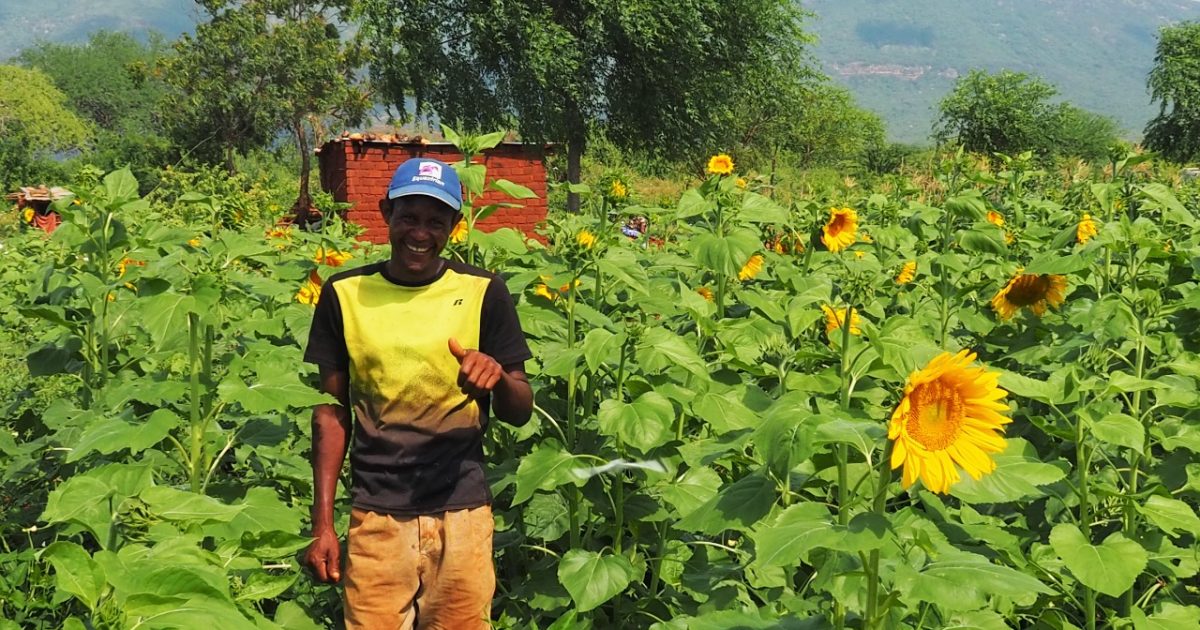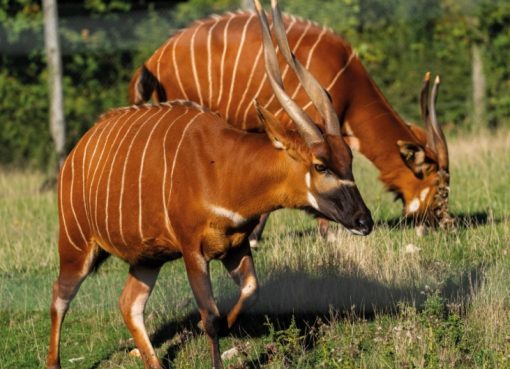From the top of Sagalla hills, a few kilometers outside the Tsavo East National Park, Kajire village and its environs are transformed into a rippling carpet of green landscape that stretches for miles towards all horizons. The land lies brooding and untouched.
In the distance, the raised Standard Gauge Railway (SGR) tracks shimmer faintly in the midday haze like a colored thread snaking its way across the expansive Tsavo plains and disappearing into infinity. It is breathtaking scenery.

Depending on the season, this nature’s beauty comes and goes. During the rainy seasons, this splendor lingers like a pleasant cover over the idyllic land. It is a time of promise for plenty and abundance.
However, when drought arrives, the beauty dissipates. The change is as sudden as it is brutal. The sun pummels the earth; the dense vegetation thins rapidly; trees shed leaves leaving gaunt branches stretching up like emaciated hands reaching out for help. The land moans, bushes shrivel; streams dry up; water pans turn muddy.
Across the scattered villages in the lower zones, farmers walk out of mud-walled houses to stare at the blank skies. There is pain and despair in their eyes. The pain is not from the absence of rain only. They are aware of what the looming drought portends.
Whenever Sagalla turns unsightly and the stench of drought stains the air, farmers instinctively brace themselves for the arrival of marauding elephants.
“The drought is a harbinger of elephant trouble. Hunger brings them to farms in search of water and pastures,” says Ms. Charity Wawuda, an artisanal farmer at Mwakoma village in Sagalla.
Mwakoma, like dozens of other villages in Sagalla, have been at the epicenter of human-wildlife conflict for ages. In what is an annual cycle, herds of rambling elephants traipse through their farms in a destructive pilgrimage leaving thousands of farmers reeling from massive crop losses.
Though the villages have valiantly borne the worst of jumbo menace, the invasions have created a situation of food insecurity with poverty-stricken households relying on government food aid to survive.
Conservation experts state these villages lie at the heart of elephant migration corridors; ancient routes used by jumbos while migrating from Tsavo East National Park to Tsavo West National Park and Mkomazi Game reserve in Tanzania.
“Most human settlements are along the elephant routes that link different conservation zones” disclosed a Kenya Wildlife Service (KWS) official in Tsavo Ecosystem who requested anonymity owing to the explosive nature of any issues touching on human-wildlife conflict in the region.
Despite the enormity of the human-wildlife conflict challenge in the region, an adaptive project by the government promises hope for farmers and is billed as a workable method to bring closure to perennial battles between man and beast.
Dubbed as Integrated Livelihood Drought Preparedness Project (ILDPP), this initiative is spearheaded by National Drought Management Authority (NDMA) through support by European Union (EU) and Save the Elephant (STE); a conservation group that conducts research on elephants and bees.
Started in 2019, the project is promoting community-led sustainable mitigation measures against persistent wildlife conflict. It is also aimed at bolstering farmers’ resilience against the adverse climate change.
One of the significant components of ILDPP is the introduction of drought-tolerant crops that are non-palatable to elephants. The crops under this category are sunflowers, Africa Bird’s Eye Chili, Moringa and Custard Apple trees.
Already, farmers in Mwakoma, Mwambiti, Kajire and Kirumbi have adopted sunflower farming citing multiple benefits promised by the crop.
Mr. Victor Ndombi, a Livelihood Improvement Officer with STE, disclosed that extensive research indicates elephants keep away from farms with sunflower crops. He adds that sunflower is favorite fodder for honeybees and farmers are diversifying into bee keeping as an alternative income earner.
“Elephants avoid farms with sunflowers. We are urging farmers to plant these plants and have beehives for honey,” he explained.
Data shows that around 131 farmers have picked up the crop. With an average acreage of between one and three acres per farmer, the projections indicate over 300 acres of land might currently be under the crop.
While this acreage appears negligible, promoters of this project term it as a positive indicator citing local farmers’ affinity for planting of traditional food crops like maize and beans.
“Farmers are loath to let go of crops they are used to. Adopting sunflower crops is progress. With good production, they can use money from sunflower and beekeeping to buy their food,” he explained.
Ms. Wawuda, a farmer, admits most farmers are eager to adopt crops to keep elephants at bay. They are willing to put their farms under sunflower but lack of funds to buy seeds and availability of irrigation systems remains a challenge.
Last year when a herd of elephants invaded her farm, they never ate a single sunflower plant.
“They only trampled across my crop and moved to other farms with maize. Sunflowers can be the answer to wildlife conflict but we need support to buy seeds and manage irrigation,” says the farmer.
The highest harvest recorded in the region is 1.1 tons. Poor rains affect production with farmers asking for interventions to boost production.
Mr. Ambrose Njola, a farmer in Kirumbi, says little rains lead to poor harvest. He argues that though sunflowers are drought-resistant, seeds need to germinate and grow to attain the resilience required to withstand absence of rain.
“The rains have failed us. Our biggest issue is water. Once we get enough water for irrigation, we will commercialize sunflower farming,” he said.
An oil-processing firm that had expressed interest in buying sunflowers from farmers complained that the harvest had little oil content from prolonged drought.
Mr. Ndombi says in future, they plan to incorporate value addition components in the project through acquiring oil press machines to process sunflower oil. The byproduct of this process produces sunflower cakes that are highly nutritious for poultry.
“This project envisages inclusion of all components of livelihood improvement. From sunflowers farming to beekeeping and poultry farming, these are interrelated ventures that are safe from elephants’ invasion,” he explains.
There are expectations that the project area will be expanded to cover Mgeno villages in Mwatate and Kishushe in Wundanyi sub-counties where human-wildlife conflict has plagued farmers for decades.
By Wagema Mwangi





